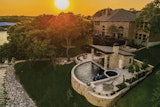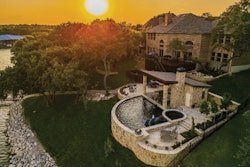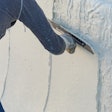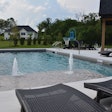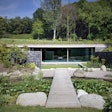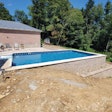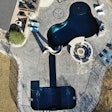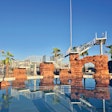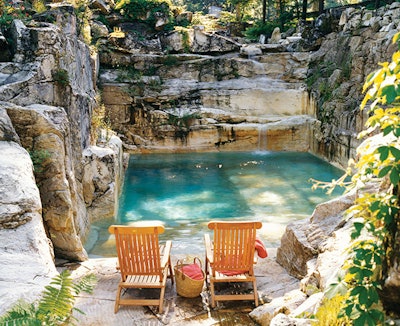


It’s not a new project, but it remains one of the most spectacular, fascinating and unique in the North American pool industry.
Once upon a time, a house was built next to an old limestone quarry. Most limestone quarries are deep and wide, but this one was relatively small, just about the perfect size for a residential pool.
For many years, it remained just that — a small, disused quarry next to a modest home.
It took a homeowner with some imagination (and resources), and a problem-solving builder to make it into the natural wonder it is today.
The professionals on the job were from Aqua Pool & Patio, East Windsor, Conn., mainly Ron Giannamore and Gregg Pruitt.
They faced an utterly novel challenge: how to turn a stone box into a working, circulating, automatically cleaned, heated swimming pool — while leaving every boulder, crag and fissure of the magnificently shaped limestone untouched.
On the plus side, providence had created a perfect form. There was no excavation required, the stone-cutters of some bygone era had left the contours you see now, a natural-looking bi-level pool with three walls and a gently sloped entry. In truth, an architect today with a free hand could hardly improve on this accidental layout.
“What you see is basically what we found,” says Mike Giannamore, Ron’s son. “A lot of the initial work was just clearing away debris.”
This was fortunate because cutting the shape of a pool into an enormous limestone shelf would have been extremely expensive and time-consuming.
Still, a host of challenges remained. The builder’s first instinct was to gunite the walls to create a sealed structure, but the homeowner demanded that the pool walls be left completely untouched.
This introduced some uncertainty to the project, Giannamore says, because the walls had large cracks and fissures (plainly evident in the pictures above), which seemed to smile at the idea of containment. “Even in the floor, where water pressure would be greatest, they were only allowed to jackhammer two trenches for the Paramount cleaning nozzles, that’s it.”
Still, the structure was holding water when they found it…
So on they went on faith, pushing forward with the build.
Not knowing whether the pool would leak or not, they installed two heaters just in case the vessel was going to need constant topping up.
It was that kind of project. “There was a fair amount of, ‘Well, we’ll deal with that when we open it up.’ and ‘We’ll deal with that later.’ As compared to a typical swimming pool, where we have a blueprint, and a plan, and we have lots of experience that we can rely on. With this pool, we really had none of that.”
They truly had no idea whether it was going to hold water until it was filled. But it does, Giannamore says, "better than most swimming pools.”
The cover was a bit of an issue, however, because there’s really nothing to which one might anchor it. So the pool is left open in the winter. The finished construction is about 15,000 gallons, measuring roughly 20 by 40 feet. The shallow shelf is about 3 feet, and the deeper end is about 7 feet.
But these are just figures. The story of this pool is its artless and magnificent stone shell and enclosing walls, laid down aeons ago and shaped by masons of another age. In an industry that strives to imitate nature’s effortless beauty, this pool stands as a pinnacle of achievement.
As for the view poolside, Giannamore could only say, “In person, this place is even more beautiful than the pictures.”


















